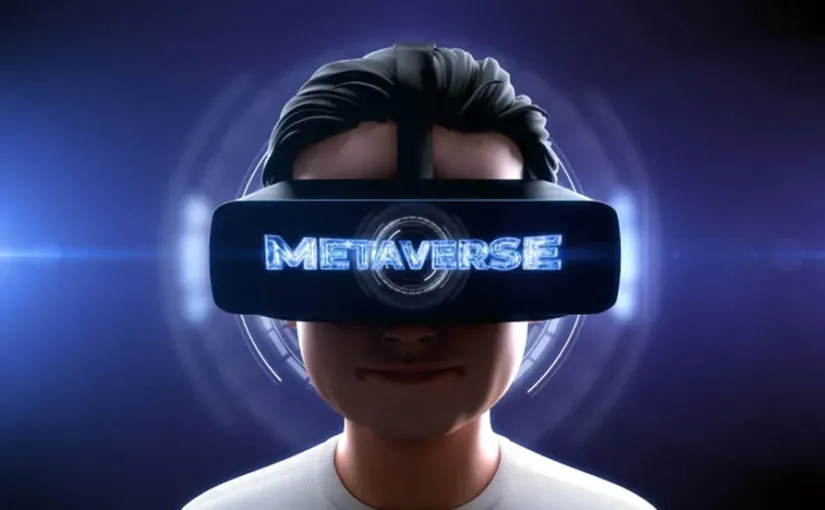It’s not hard to see why your organisation would want to create an agile culture.
In these unprecedented times of global change and technological revolution, commercial and economic disruption is constant and intense.
Once stable business models, be that combustion engines, high street shopping, even desktop software are becoming dated almost overnight and being rapidly replaced or if not challenged by a new technologies, emerging at an explosive pace.
No industry is safe.
The winners in this modern, rapidly changing world are those agile businesses that can pivot and rapidly alter their business models in response to the changing environment.
Losers stand still.
But, agile businesses require adaptable employees who can learn quickly and willingly and master new skills and competencies to thrust the business forwards into the new direction.
Here’s some tips on how to create an agile learning culture in your business.
Develop a Vision First
Most of the business world’s biggest achievements start with some form of vision.
And L&D is the same, meaning you’ll need to create a vision around your agile learning culture if you want it to succeed.
In fact research from HCI back in 2015 showed that the organisations who were most successful in deploying a learning culture incorporated elements such as learning, growth, challenge, risk-taking and mistake-making as positive components of a future agile learning culture.
It’s OK to fail, it’s part of the rapid learning process

For people to want to learn in the first place, you need to create a safe environment where employees feel that it is OK to experiment and make mistakes or even fail without fear of blame.
Blame cultures work in opposition to learning.
In learning organisations, staff should feel able to admit to shortcomings without being labelled as weak or incompetent, but rather being seen as someone with he potential and opportunity to improve.
How can a blame-free culture be achieved?
When Alan Mullaly took over in 2007 at the failing Ford Company, he found a blame culture in place with executives being afraid to share their failures.
As a result, he decided to publicly celebrate failures and in doing seeded an agile culture that embraced the learning that is often associated with failure.
This brings us to the most important aspect of a culture that embraces failure which is that there must be learning.
Repeated failure without learning is well, just stupidity.
An agile learning culture is a virtuous and harmonious cycle of experimentation, failure, learning, improvement and success.
Blame has no role to play in an agile learning environment.
When failure occurs, lessons should be learned and documented so future behaviour can be modified and the employee improves.
Build a stretch culture so employees are always motivated to learn.
When setting goals, think SMARTS, not SMART.
That’s specific, measurable, attainable, realistic, time-bounded and STRETCHING.
By including stretch assignments into your performance management and leadership development process you will take staff out of their comfort zone and force staff to acquire new skills.
A stretch assignment could be as simple as a goal within an appraisal such as a project to harmonise several products into one line which forces the employee to develop new commercial and change management skills.
Or it could be as big as moving an employee into a 1 year overseas assignment to turnaround a failing satellite office.
The point is that it should be extremely challenging and force the employee to acquire skills which they don’t currently possess.
The strategy does comes with some risk and there is a fine line between stretching and breaking an employee, but IBM, PG, 3M, GE and many others put well managed stretch assignments at the heart of their agile learning culture.
A stretch mind-set can also be built into your recruiting processes.
Why wait 6 months to recruit externally – and leave a new venture on ice while the competition gets a head start – when you can rapidly hire a nearly-qualified internal candidate who is ready to step up.
There’s potentially more upside than downside to such a move, because research shows that internal hires are not only hired much faster but they perform better than external candidates hired to similar roles.
Lead From The Top With Continuous Learning
Many workers labour under the misconception that learning ends with a degree, MBA or doctorate.
This means a significant proportion of your work-force probably think their learning journey is over and may be closed to acquiring new knowledge.
To ensure a thirst for learning permeates your entire work-force you’ll need to tend the fire.
Start by painting the picture for them, letting them know that business icons like Richard Branson, Bill Gates, Zuckerberg, Warren Buffet are all committed life-long learners.
Lead from the top, encouraging your leaders to regularly share with staff, either via social media or face-to-face, their recommended reads, recent development experiences or favourite learning resources.
This will help to not only normalise training but actually promote continuous learning as a habit of highly effective people.
Staff will begin to see that continuous learning is an important if not essential pathway to success, providing great motivation for learning.

Encourage Self-Directed Learning
As long as a staff have a web browser and an internet connection they have access to an unprecedented level of learning resources covering just about every topic you can imagine.
Employees today have the capacity to direct their own learning using free and paid eLearning platform.
If a new business challenge arrives requiring employees to acquire new skills now, why waste valuable time and resource designing courses, when you can adopt a more agile, fast-to-market strategy, gathering and presenting content from external resources?
This is bottom-up style of learning, enables employees to find the right skills when they need them, quickly removing blocks and obstacles to progress and increased productivity.
This on-demand learning capability is central to creating an agile learning culture, (and importantly a quick-to-market business) in which employees can acquire information and knowledge as they need it.
Indiscriminate and over-zealous internet access policies can stifle self-directed learning
You may need to revisit your internet access policy as some of the more over-zealous and indiscriminate ones can begin to run counter to self-directed learning by unknowingly restricting access to vital learning resources.
Canvass your work-force to see if any vital learning resources are restricted and if so, talk to your cyber-security team and organise a content review process where staff can submit learning resources for approval for access via the company network.
Find Market-Driven, Real-Time External Learning Resources
L&D departments can not be expected to monitor and communicate each and every change in each industry for each job.
But, an agile business operating in a rapidly changing industry needs to be right on the pulse of all these changes if they are to remain adaptable.
If google updates an SEO algorithm or Android announce a new software update, or a new time-saving tool hits the market, your team need to be able to access a course on this in days, not weeks, god forbid months, or risk, falling behind the competition and failing clients.
Ensure that you prioritise time-relevant learning resources that update regularly and notify learners of new industry changes and next practices so your employees will always at the forefront of change.
That’s agile.
Microlearning
Let’s face it, the business world is becoming more competitive by the hour and as a result the typical modern-day worker is now time-pressurized.
As a result being ‘too busy’ to attend a 1 or 2 day away day course is a very common reason for staff failing to learn.
This means that in today’s world, traditional block-learning in class-rooms is a barrier to learning and if your organisation relies heavily on this type of learning, you will struggle to develop an agile learning culture.
In an agile learning environment you’ll need to reduce your dependence of traditional away day learning and make bite-size, elearning content sessions, (5 to 30 minutes chunks of education) a core part of your learning apparatus.
Time-pressurised staff who have previously been barred from learning because they don’t have the time for a 2 day continuous course now have an open door to learning: they can take short microlearning courses on their phone or desktop at a time that suits them, fitted in to the inevitable quiet spots that occur during their busy day.
The ability to learn in a flexible not rigid fashion is crucial for develop a lasting agile learning culture. A lot of bespoke elearning solutions are agile in their design and delivery as well.
The external commercial value of an agile learning culture must be highlighted too.
If you have a workforce of employees ready and willing to step out of their comfort zone and excel in pioneering project areas, you will have an agile business.
The encompassing organisation will have an edge on it’s more static peers and will be able to break new ground, and accept risky pioneering projects, clients, ventures quickly, safe in the knowledge that it’s workforce will step up to the challenge.
If you’re ready to level up your L&D strategy with the help of an eLearning company, get in touch with us today!


 It’s not hard to see why your organisation would want to create an agile culture.
It’s not hard to see why your organisation would want to create an agile culture.










